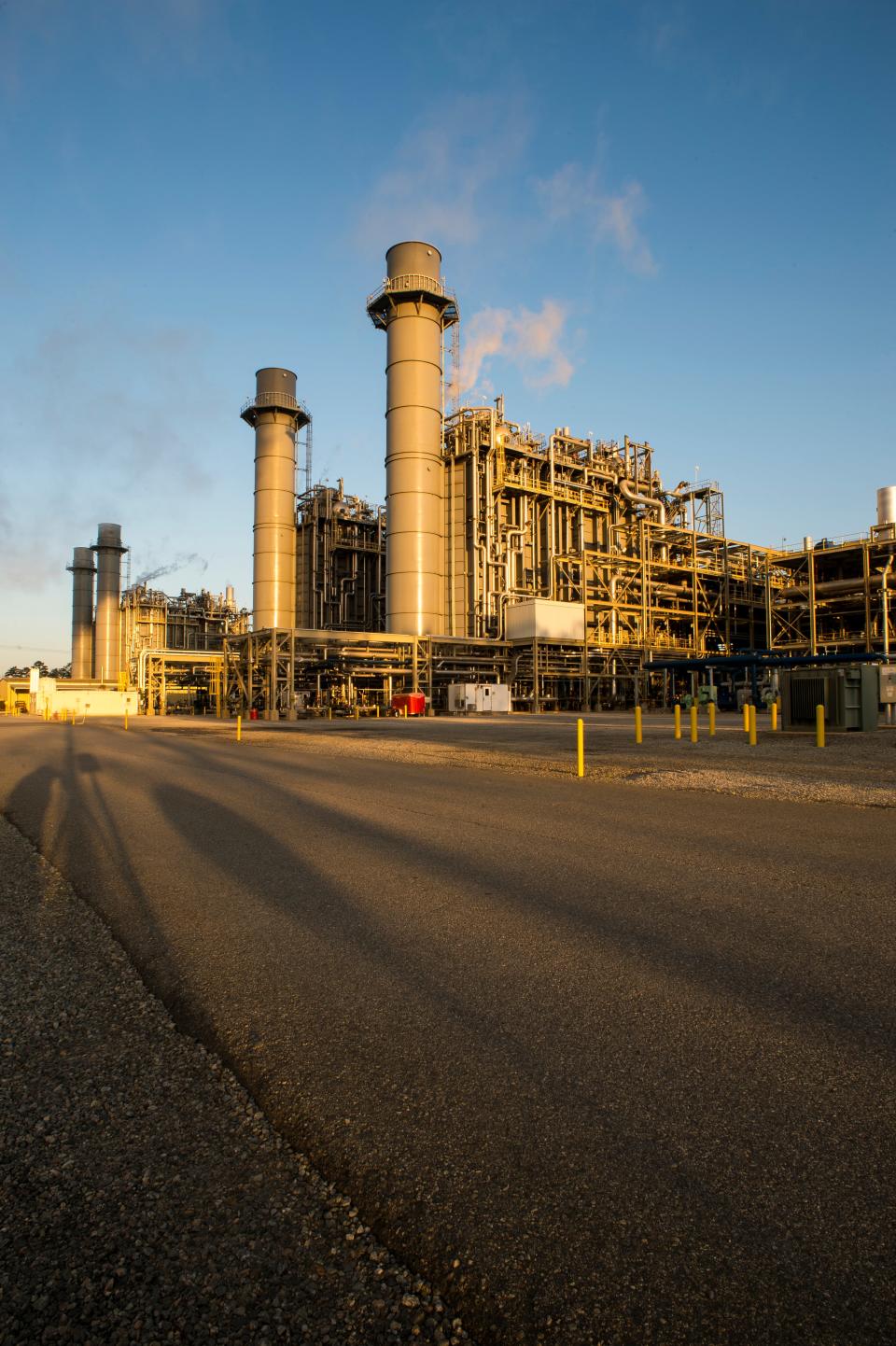Two Effingham County power plants listed in top 10 'dirtiest' in Georgia for CO2 emissions
Two power plants in Effingham County were listed in the top 10 “dirtiest” power plants in Georgia.
The McIntosh Combined Cycle Facility and the Effingham Energy Facility were named as top carbon dioxide emitters, according to the Atlanta-based Environment Georgia Research & Policy Center.
Environment Georgia based its rankings on the Environmental Protection Agency’s eGrid, a database from its Clean Air Markets Division which collects data on electric power generated in the U.S.
The EPA tracks these facilities’ emissions and impacts on climate change by using carbon dioxide equivalent emissions as a measurement, which it defines as the number of metric tons of carbon dioxide emissions with the same global warming potential as a metric ton of another greenhouse gas.

Carbon dioxide is a greenhouse gas, along with others like methane, which contribute to atmospheric warming and climate change, according to the EPA.
Also: Savannah among coalition of cities pushing Georgia Power to better embrace clean energy
Environment Georgia announced that for 2020, three Georgia-based powerplants made it into the top 100 highest-emitters nationwide per the EPA’s data: Plant Bowen in Bartow County (#23), Plant Jack McDonough in Cobb County (#34) and Plant Scherer in Monroe County (#36). It also included a separate list of the top 10 emitters in Georgia, which included the two Effingham County facilities.
Effingham County power plants
The McIntosh Combined Cycle Facility in Effingham County placed fourth due to its estimated 3.28 million metric tons of carbon dioxide equivalent emissions in 2020.
In 2019, Georgia Power officially closed down the coal unit at the McIntosh facility, although it hadn’t been active since 2016, as part of its ongoing effort to decommission all of its coal plants by 2035.
The Effingham Energy Facility, which electricity cooperative Oglethorpe Power purchased from the Carlyle Group in 2021, ranked 10th place, outputting 1.12 million metric tons of carbon dioxide equivalent emissions.
To put those emissions into perspective, the EPA has an emissions equivalent for passenger vehicles, which estimates that the average car emits about 4.6 metric tons of carbon dioxide per year. For the McIntosh Combined Cycle Facility, it emits about the same amount as 713,000 cars. The Effingham Energy Facility emits the carbon dioxide equivalent annually of just under 261,000 cars.
Electricity production is the second-largest creator of warming causing pollution, according to Environment Georgia, and the organization recognizes that electricity is a necessity for Georgians. However, in its report Environment Georgia stated that the top 10 facilities listed have an outsized environmental impact.
According to the EPA’s 2020 data, the 10 facilities release 91.46% of greenhouse gas pollution, but generate only 56.49% of electricity in the state.
Georgia Power’s McIntosh Combined Cycle facility, according to a 2021 Facts & Figures sheet, has a 1,318,920 kilowatt capacity placing it in the middle of the pack in Georgia Power’s facilities for its output capacity. Meanwhile, Oglethorpe Power’s Effingham facility only has a 511-megawatt capacity.
Progress
John Kraft, spokesperson for Georgia Power, said that since 2007, the utility has reduced its carbon emissions by more than 60%, which has been accomplished by transitioning the generation fleet and retiring coal generation.
Georgia Power’s most recently proposed Integrated Resource Plan, a strategy for the future, plans to retire all coal units by 2028, with the exception of Plant Bowen, and to double renewable generation by adding an additional 6,000 megawatts by 2035, according to Kraft.
Read More: Public hearings for Georgia Power's Integrated Resource Plan begin this week
While coal plants tend to emit greenhouse gasses at much higher rates than other energy production methods, plants like the McIntosh Combined Cycle Facility which no longer operates on coal still can have large impacts on emissions.
On the other end, Oglethorpe Power’s Effingham facility has a much smaller capacity than the McIntosh plant, emitting only about one-third as much in greenhouse gases.
Blair Romero, corporate communications manager for Oglethorpe Power, said that the company had record reliability in 2021 for electricity generation and that Oglethorpe Power has decreased its overall carbon dioxide emissions rate by 37% since 2005. From coal alone, carbon dioxide emissions have decreased by 75%.
With the addition of the Effingham facility, Romero said Oglethorpe has added almost 3,000 megawatts of natural gas-fired generation to its portfolio in the last 12 years.
While the two Effingham facilities represent a small fraction of both companies' power-producing portfolios and service to customers, for environmental groups like Environment Georgia they represent where power companies in Georgia have the most opportunity to change.
Marisa is an environmental journalist covering climate change and the environment. She can be reached at mmecke@gannett.com or by phone at (912) 328-4411.
This article originally appeared on Savannah Morning News: 2 Effingham County power plants in the top ten dirtiest GA emitters

